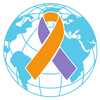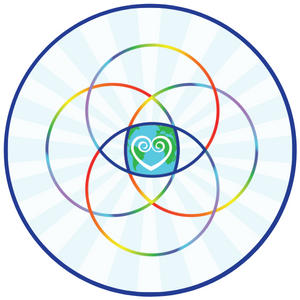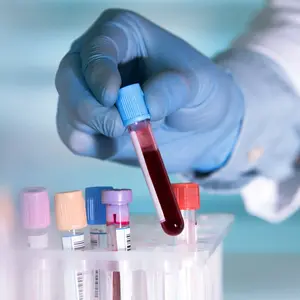

Industry News

Industry News
Traditional Medicine Gets Global Recognition from WHO
The World Health Organization has taken a monumental step toward integrating ancient healing practices into modern healthcare systems. At the 78th World Health Assembly, member states approved the WHO Global Traditional Medicine Strategy 2025-2034, marking a watershed moment for traditional medicine practitioners and Indigenous communities worldwide.
This landmark decision recognizes traditional medicine as a legitimate component of global healthcare delivery. The strategy acknowledges that over 80% of the world's population in more than 170 countries uses some form of traditional medicine, with usage reaching nearly half the population in some nations, including France and Canada.
The approval comes after an intensive two-year consultation process involving over 1,200 comments from member states, stakeholders, and Indigenous representatives across six WHO regions. What emerged is a carefully balanced framework that embraces accumulated wisdom and healing practices passed down through generations while demanding they meet rigorous scientific evidence standards.
Understanding Traditional Medicine's Global Reach
Traditional medicine encompasses both codified and non-codified healthcare systems that originated in different historical and cultural contexts. These practices emphasize nature-based remedies and holistic approaches to restore balance between mind, body, and environment.
The statistics surrounding traditional medicine usage are striking. WHO data reveals that approximately 40% of pharmaceutical products have their origins in traditional medicine practices. This connection between ancient wisdom and modern therapeutics underscores the potential value of systematically studying traditional approaches.
Traditional medicine serves as the primary healthcare option for large populations in low- and middle- income countries, while simultaneously gaining popularity in high income countries as complementary care. This dual role positions traditional medicine as both a necessity and a choice in global healthcare delivery.
Core Elements of the WHO Strategy
The newly approved strategy centers on four main objectives that will guide implementation over the next decade. These strategic pillars reflect the complexity of integrating traditional practices into evidence-based healthcare systems.
Evidence-Based Practice Development: The strategy emphasizes strengthening the evidence base for traditional, complementary and integrative medicine (TCIM) through increased research investment. Member states are encouraged to establish national research agendas, conduct scientific studies, and build comprehensive databases of evidence-based practices. WHO will support the development of research methodologies appropriate to TCIM's complex and individualized approaches. The organization plans to encourage the use of artificial intelligence tools and digital technologies to enhance research capabilities.
Regulatory Framework Implementation: Safety and effectiveness remain paramount concerns in the strategy. The WHO calls for risk-based regulatory approaches that tailor requirements to specific traditional medicine products and services. This includes establishing quality control measures, standards, and labeling requirements. Sustainability regulations emphasize preservation of biodiversity. For practitioners, the strategy emphasizes developing appropriate qualification standards, certification requirements, and ongoing professional development programs. These measures aim to ensure practitioners possess necessary knowledge and skills to deliver safe, effective care.
Health System Integration; The strategy positions traditional medicine as a potential component of universal health coverage, particularly within primary healthcare systems. Integration models should demonstrate how traditional practices can complement biomedical approaches across the care continuum. Member states are encouraged to develop clinical guidelines incorporating traditional approaches, establish sustainable financing mechanisms, and create interprofessional collaboration frameworks between traditional and conventional practitioners.
Cross-Sector Collaboration: Beyond healthcare, the strategy recognizes traditional medicine's contributions to environmental sustainability, biodiversity conservation, and cultural preservation. Member states are encouraged to protect biodiversity as well as preserve traditional practices by facilitating intercultural dialogue. Furthermore, the strategy outlines purposeful benefit-sharing of traditional knowledges and intergenerational knowledge exchange.
Regional Perspectives and Consultation Outcomes
The strategy development process included extensive regional consultations that revealed varying perspectives and priorities across different parts of the world.
Reception Differs Across Regions
Countries across Asia, Africa, and the Middle East supported the strategy. Iran called it "a visionary yet realistic roadmap" for integrating thousands of years of medical knowledge. Representatives of these regions view traditional medicine as deeply embedded in their healthcare heritage and see the WHO strategy as validation of their cultural practices, which may assist in improving regulation frameworks.
Latin American countries were also largely onboard. In June, the Pan American Health Organization led a consultation in São Paulo, Brazil, with over 60 participants including government ministers from nine countries. The Americas consultation focused on research prioritization and evidence-related challenges specific to the region.
The European Union, represented by Poland, voiced concerns about quality and safety standards. EU delegates urged WHO to "be firm and vocal against harmful and or inefficient practices that may be disguised as alternative medicines." This position reflects ongoing tensions between empirical science approaches and traditional healing methods. The EU also recommended preventing conflicts of interest when engaging with industry practitioners to develop regulations and standards, emphasizing the importance of maintaining scientific rigor in regulatory processes. Furthermore, Switzerland-based civil society group Medicus Mundi International Network expressed concerns about the strategic plan, noting that its approach continues to privilege Western scientific paradigms, displacing Indigenous practices rooted in land, culture, and spirituality.
Addressing Safety And Quality
Opposition to the strategy primarily centered on quality control and safety verification. Critics worry about the potential for unsubstantiated claims and fraudulent practices to flourish under the guise of traditional medicine.
The strategy acknowledges existing problems with fake products and misleading claims in the sector, citing companies like India’s Patanjali, which faced lawsuits for “false and misleading” claims. Many countries reported that while traditional medicine is widely used, it remains largely unregulated; nations like Comoros and Togo specifically noted training providers and establishing regulatory frameworks as ongoing challenges.
The WHO strategy emphasizes that no healthcare practices will be supported unless they are evidence-based, a requirement that applies equally to traditional medicine, biomedicine, and public health interventions. However, the evidence base varies significantly across different practices. While strong evidence exists for some methods like acupuncture and certain herbal medicines, others have limited scientific validation, creating implementation challenges that will require a sustained research investment.
Implementation Opportunities and Challenges
The strategy creates numerous opportunities for countries to develop comprehensive traditional medicine policies while addressing persistent challenges in the field.
Regulatory Development Opportunities
Countries now have WHO guidance to develop context-sensitive regulatory frameworks that protect both practitioners and patients. This includes creating standards for educational programs, certification processes, and quality assurance mechanisms.
The strategy also provides a framework for addressing intellectual property concerns and ensuring that Indigenous communities benefit from the commercialization of their traditional knowledge.
Research and Innovation Potential
The approval opens doors for increased research funding and international collaboration in traditional medicine studies. Countries can establish national research agendas aligned with global priorities while addressing local health needs.
Digital technologies and artificial intelligence offer new tools for studying traditional medicine practices and validating their effectiveness through modern scientific methods.
Funding Challenges
Despite the opportunities, significant challenges remain in implementing the strategy. The lack of concrete funding commitments represents a major hurdle, as no countries or WHO itself announced new financial investments during the strategy's approval.
The WHO faces its own financial constraints, with a $1.5 billion budget deficit after already cutting its budget by nearly 25%. This financial reality places most implementation burden on individual member states rather than the global organization.
Standardization Complexities
Creating unified standards across diverse traditional medicine practices presents enormous complexity. The strategy must accommodate both oral and codified forms of medicine while respecting cultural differences and traditional knowledge systems.
Thailand's delegate emphasized the importance of developing "context-sensitive methodologies, including those that encompass non-codified and oral traditions" while maintaining scientific rigor.
Indigenous Rights and Biodiversity Protection
The strategy explicitly recognizes Indigenous peoples' rights to their traditional medicines and emphasizes the importance of benefit-sharing when traditional knowledge leads to commercial products.
Cultural Heritage Protection
The framework acknowledges that Indigenous peoples are often the custodians of traditional medicine knowledge, particularly in small island nations where traditional practices may be the only available healthcare for large populations.
Environmental Sustainability
Traditional medicine's connection to natural resources creates both opportunities and responsibilities for biodiversity conservation. The strategy encourages sustainable practices in the production and supply of traditional medicine products.
Member states are directed to enforce restrictions on the use of endangered species for medicinal products and to develop sustainable alternatives. This approach aligns with international conventions like CITES while supporting environmental conservation goals.
Looking Forward: Implementation and Global Impact
The WHO Global Traditional Medicine Strategy 2025-2034 represents more than policy development—it signals a fundamental shift in how global health organizations view the relationship between traditional and modern medicine.
Next Steps and Monitoring
Implementation will be monitored through regular WHO surveys and member state reporting. A mid-term review scheduled for 2030 will assess progress and identify necessary strategy modifications.
The Second WHO Traditional Medicine Global Summit, scheduled for December 2-4, 2025, in New Delhi, India, will provide a key platform for aligning stakeholders and sharing best practices for strategy implementation.
Global Health System Transformation
Success in implementing this strategy could transform global health systems by creating more inclusive, culturally appropriate care options. The integration of traditional medicine into primary healthcare systems offers potential pathways to universal health coverage, particularly in underserved communities.
The strategy also positions traditional medicine as a contributor to addressing contemporary health challenges, from chronic disease management to mental health support, while respecting cultural preferences and individual autonomy in healthcare decision-making.
The WHO's approval of this comprehensive traditional medicine strategy marks a historic moment in global health policy. By recognizing the value of traditional healing practices while maintaining scientific rigor, the strategy creates a framework for bridging ancient wisdom with modern healthcare needs. Success will depend on sustained commitment from member states, adequate funding, and careful balance between cultural respect and evidence-based practice. The next decade will reveal whether this ambitious vision can transform global healthcare delivery while honoring the rich traditions that have served humanity for millennia.
For related articles on this topic, see:
WHO Partners with India on Traditional Medicine
The World Health Organization entered a partnership with India's Ministry of AYUSH (an acronym for Ayurveda, Yoga and Naturopathy, Unani, Siddha, and Homeopathy). This collaboration aims to integrate traditional Indian medical systems into the global healthcare framework by standardizing and classifying these interventions at an international level. Read more>>>
China Leads in Integration of Traditional Medicine
In China, traditional Chinese medicine (TCM) institutions handle approximately 1.69 billion outpatient visits annually, with TCM departments present in over 90% of general hospitals across the country. China has developed robust regulatory mechanisms to support TCM development while ensuring regulated, safe practices. Read more>>>
REFERENCES
https://www.thelancet.com/journals/lancet/article/PIIS0140-6736(25)01142-0/fulltext
https://www.who.int/news/item/02-06-2025-wha78--traditional-medicine-takes-centre-stage
https://apps.who.int/gb/ebwha/pdf_files/WHA78/A78_4Add1-en.pdf
https://www.who.int/news/item/27-06-2025-setting-global-research-priorities-for-traditional-medicine


 By
By







